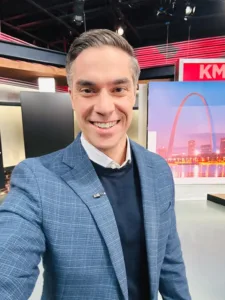
A recent incident involving a St. Louis television station has sparked outrage and discussions about racial sensitivity in media after an anchor used an offensive term to describe minority homeowners during a broadcast.
On February 26, KMOV anchor Cory Stark, who is white, made a regrettable error while previewing a story about racial bias in home appraisals. In the segment, Stark referred to “colored homeowners,” a term widely recognized as outdated, offensive, and racist. The station quickly issued an apology for the incident, acknowledging the mistake and expressing regret for any harm caused.
JD Sosnoff, KMOV’s vice president and general manager, addressed the issue, stating that the term was inadvertently changed in the script and mistakenly read on air. Despite the apologies from both Sosnoff and Stark, criticism continued to grow, prompting calls for accountability and action.
The National Association of Black Journalists (NABJ) condemned the use of the offensive term, emphasizing its harmful nature and the need for sensitivity in media representation. With St. Louis boasting a significant black population of 43%, the incident resonated deeply within the community.
In response to the outcry, the NABJ called for more than just apologies. They urged KMOV to implement retraining for its employees on matters of diversity and inclusion, as well as to improve efforts in recruiting and retaining black staff members. NABJ President Ken Lemon and Vice President-Broadcast Walter Smith Randolph emphasized the importance of tangible results stemming from discussions with the station’s management.
St. Louis County NAACP president John Bowman, while condemning the incident, offered a nuanced perspective, suggesting that there may not have been malicious intent behind Stark’s use of the offensive term. Bowman expressed confidence in his interactions with Stark, indicating that he did not believe the anchor harbored discriminatory attitudes.
The incident serves as a reminder of the ongoing challenges in achieving equality and fair representation in media. While strides have been made in addressing racial biases, instances like this highlight the need for continued vigilance and education on issues of diversity and inclusion.
As discussions ensue between KMOV’s management and advocacy groups, there is hope that meaningful changes will be implemented to prevent similar incidents in the future and foster a more inclusive environment in media.
